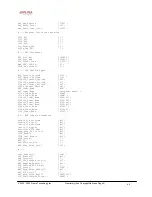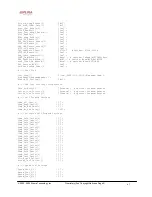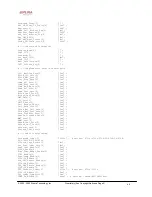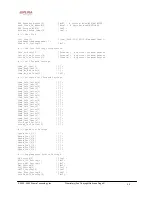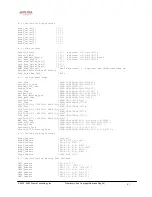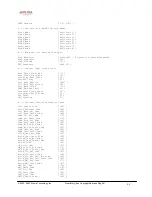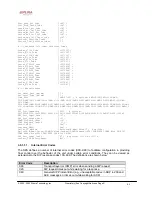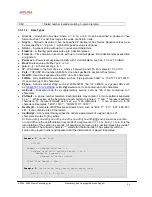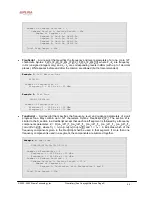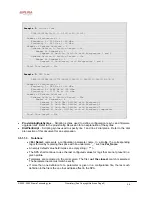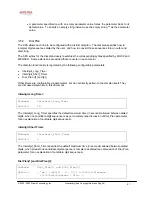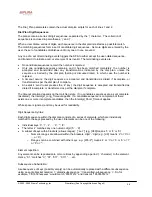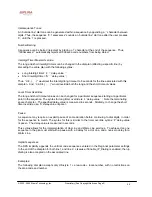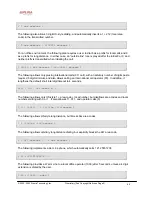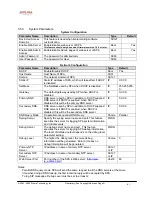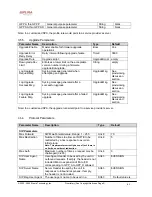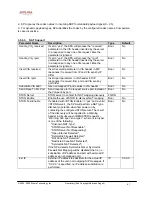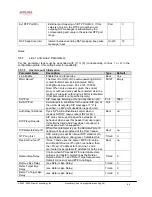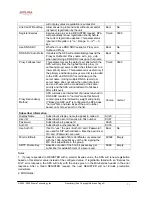
© 2003 - 2005 Sipura Technology, Inc
Proprietary (See Copyright Notice on Page 2)
56
Example 2
: Stutter Tone
350@-19,440@-19;2(.1/.1/1+2);10(*/0/1+2)
Number of Frequencies = 2
Frequency 1 = 350 Hz at –19 dBm
Frequency 2 = 440 Hz at –19 dBm
Number of Cadence Sections = 2
Cadence Section 1: Section Length = 2s
Number of Segments = 1
Segment 1: On=0.1s, Off=0.1s with Frequencies 1 and 2
Cadence Section 2: Section Length = 10s
Number of Segments = 1
Segment 1: On=forever, with Frequencies 1 and 2
Total Tone Length = 12s
Example 3
: SIT Tone
985@-16,1428@-16,1777@-16;20(.380/0/1,.380/0/2,.380/0/3,0/4/0)
Number of Frequencies = 3
Frequency 1 = 985 Hz at –16 dBm
Frequency 2 = 1428 Hz at –16 dBm
Frequency 3 = 1777 Hz at –16 dBm
Number of Cadence Sections = 1
Cadence Section 1: Section Length = 20s
Number of Segments = 4
Segment 1: On=0.38s, Off=0s, with Frequency 1
Segment 2: On=0.38s, Off=0s, with Frequency 2
Segment 3: On=0.38s, Off=0s, with Frequency 3
Segment 4: On=0s, Off=4s, with no frequency components
Total Tone Length = 20s
•
ProvisioningRuleSyntax
– Scripting syntax used to define configuration resync and firmware
upgrade rules. Refer to the provisioning discussion for an explanation of the syntax.
•
DialPlanScript
– Scripting syntax used to specify line 1 and line 2 dial plans. Refer to the dial
plan section of this document for an explanation.
3.5.1.1.3. Notations
•
<Par Name>
represents a configuration parameter name. In a profile, the corresponding
tag is formed by replacing the space with an underscore “
_
”, such as
Par_Name
.
•
An empty default value field implies an empty string <
“”
>.
•
The SPA shall continue to use the last configured values for tags that are not present in a
given profile.
•
Templates are compared in the order given. The first,
not the closest
, match is selected.
The parameter name must match exactly.
•
If more than one definition for a parameter is given in a configuration file, the last such
definition in the file is the one that will take effect in the SPA.




